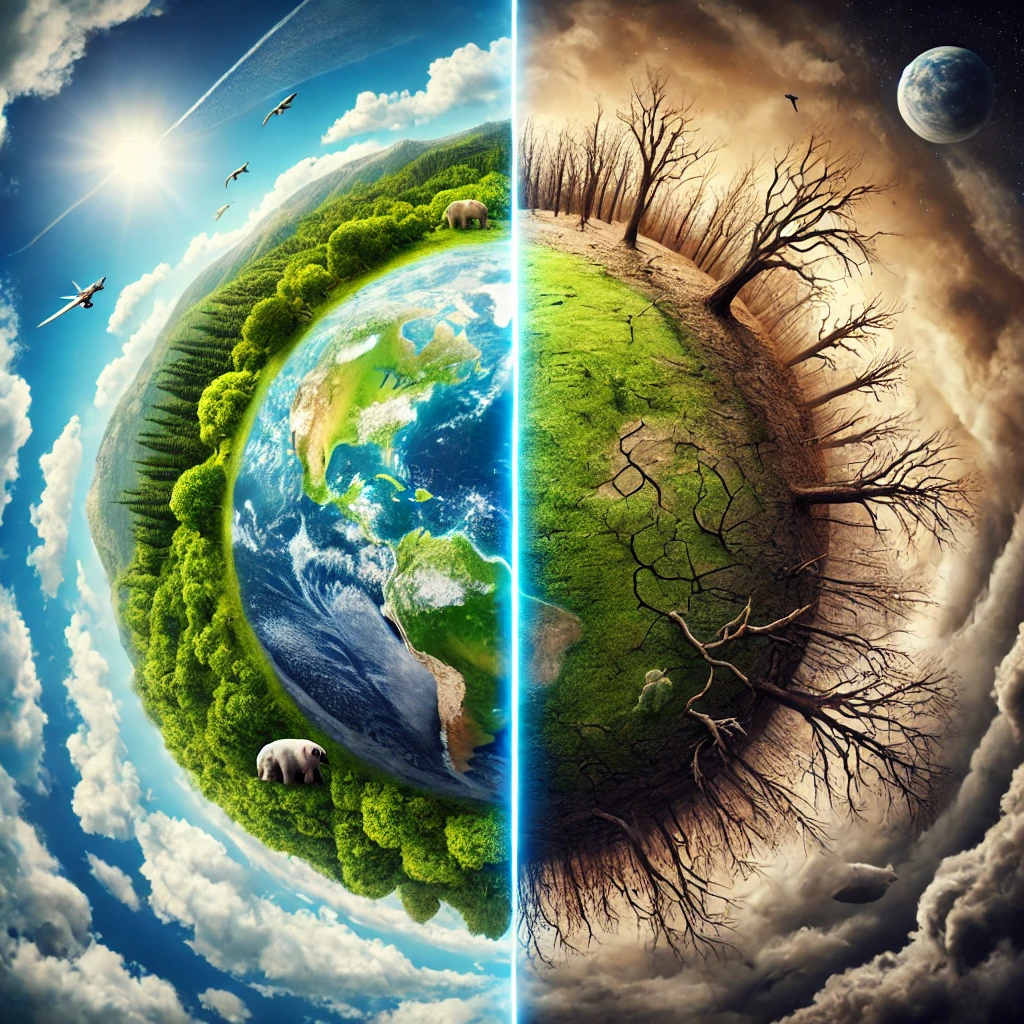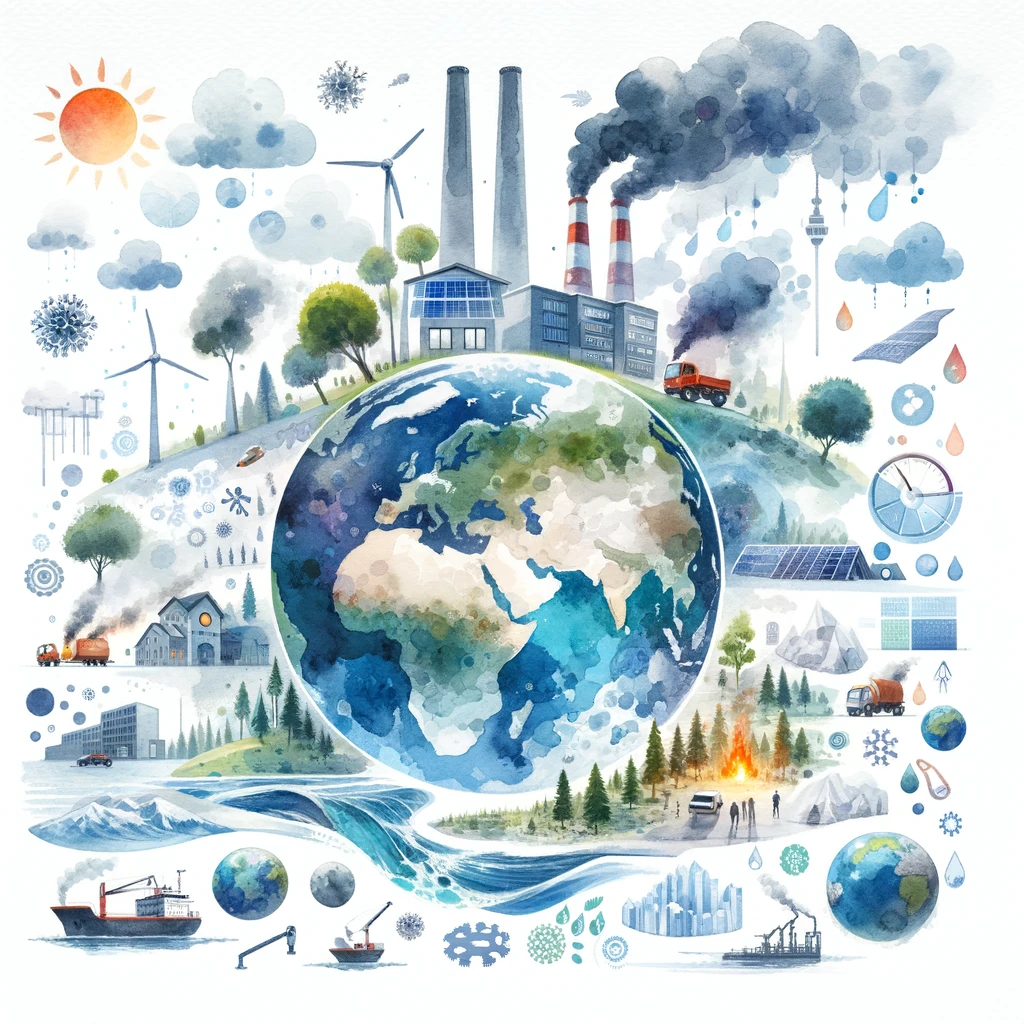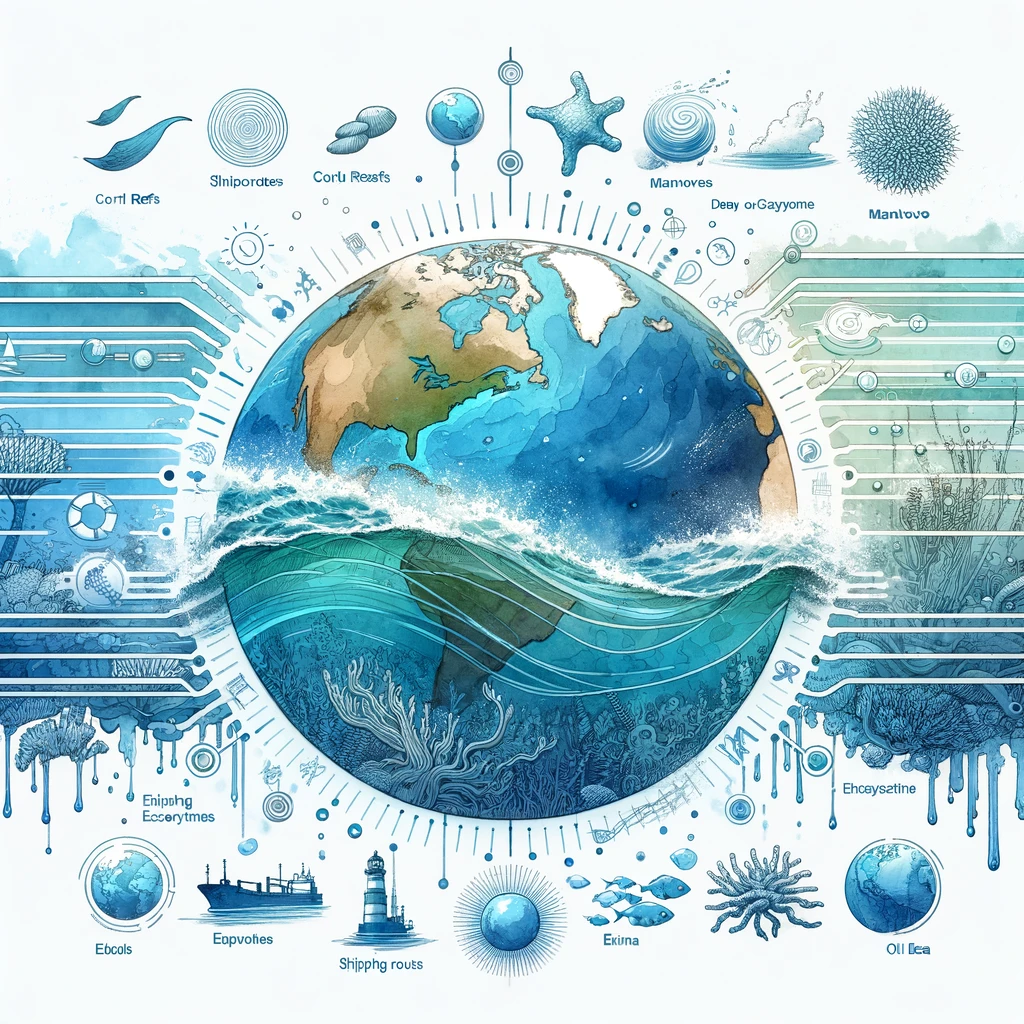Climate change is a periodic modification of Earth’s climate, that is brought about due to the changes in the atmosphere and the interactions between the atmosphere and the other various geological, chemical, biological, and geographical factors within the Earth’s system. Climate change is considered one of the major issues of modern times, with large environmental, economic, and social impacts worldwide. Understanding different aspects of climate change connected to its causes, evidence, impacts, mitigation, and adaptation techniques stands in front of the proper approach to this challenge.
- Climate change threatens human beings with food insecurity, lack of access to water, flooding, infectious diseases, extreme heat, economic losses, and displacement.
- It makes the pattern of weather less predictable due to climate change. Such unpredictable weather may be bad for the maintenance and growth of crops, hence vulnerable for agriculture-based countries like India.
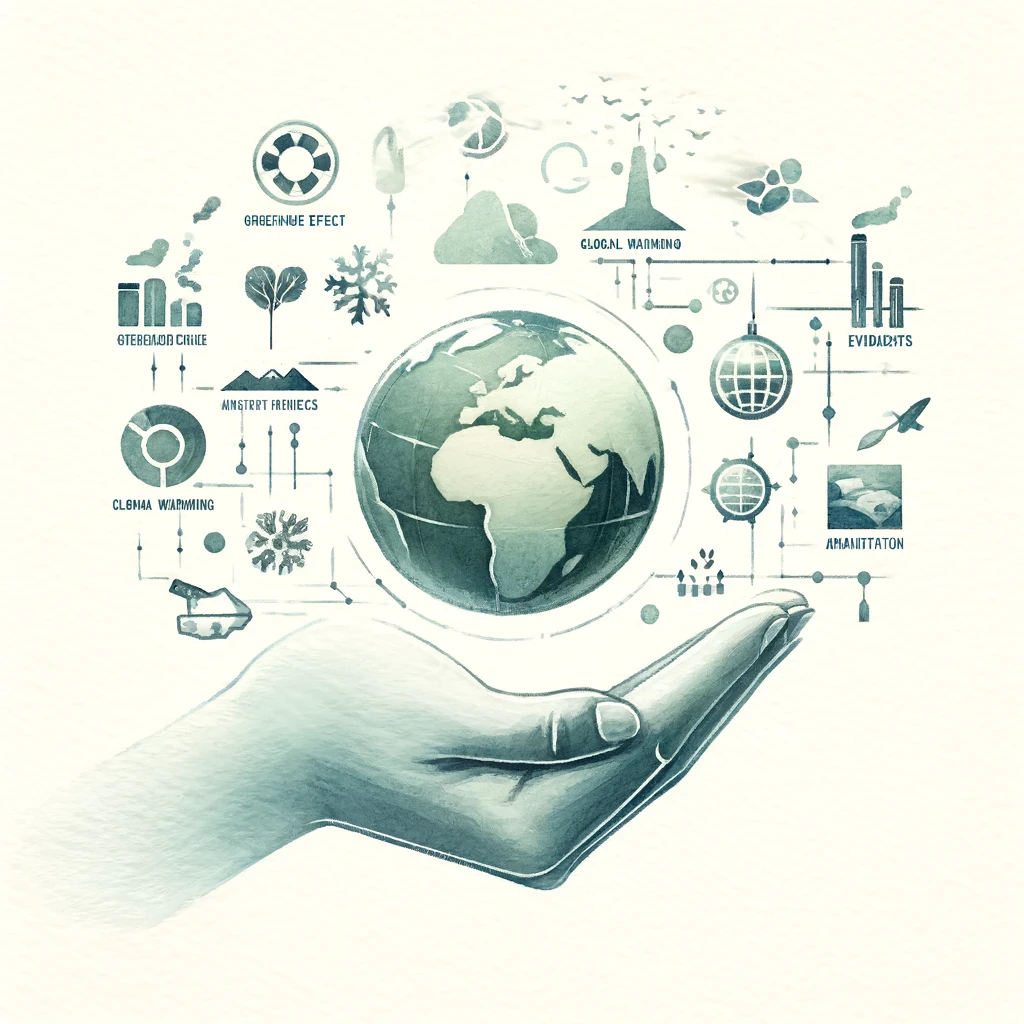
Greenhouse Effect
Natural vs. Enhanced Greenhouse Effect
| Aspect | Natural Greenhouse Effect | Enhanced Greenhouse Effect |
|---|---|---|
| Definition | A natural process that warms the Earth’s surface by trapping some of the Sun’s energy in the atmosphere. | A process intensified by human activities, leading to an increased concentration of greenhouse gases in the atmosphere. |
| Cause | The Sun’s energy, some of which is reflected back to space while the rest is absorbed and re-radiated as heat by the Earth. | Human activities such as burning fossil fuels and deforestation that increase greenhouse gases beyond natural levels. |
| Greenhouse Gases (GHGs) | Naturally occurring GHGs (e.g., water vapor, carbon dioxide, methane) trap heat, maintaining Earth’s temperature. | Increased levels of GHGs (e.g., carbon dioxide, methane) due to human activities trap more heat, leading to global warming. |
| Impact on Earth’s Temperature | Keeps the planet warm enough to sustain life, maintaining a stable climate. | Causes a rise in global temperatures, leading to global warming and climate change. |
Major Greenhouse Gases
- Carbon Dioxide (CO₂): The most important GHG contributed by human activity, especially from the burning of fossil fuels, deforestation, and industrial processes.
- Methane (CH₄): This is released during coal, oil, and natural gas production and transport; livestock, and other agricultural activities.
- Nitrous Oxide (N₂O): It is emitted by agriculture and industry and from the combustion of fossil fuels and solid waste.
- Fluorinated Gases: Synthetic gases used in industrial applications include hydrofluorocarbons (HFCs) and perfluorocarbons (PFCs), which are gases with a heat-trapping potential many times higher than that of CO₂.
Sources and Sinks
- Sources: Burning of fossil fuels, industrial processes, deforestation, and agricultural activities.
- Sinks: These are the natural systems that absorb more GHG than those emitted. They include forests, oceans, and soil. All these play a vital role in mitigating climate change through carbon sequestration from the atmosphere.
Global Warming
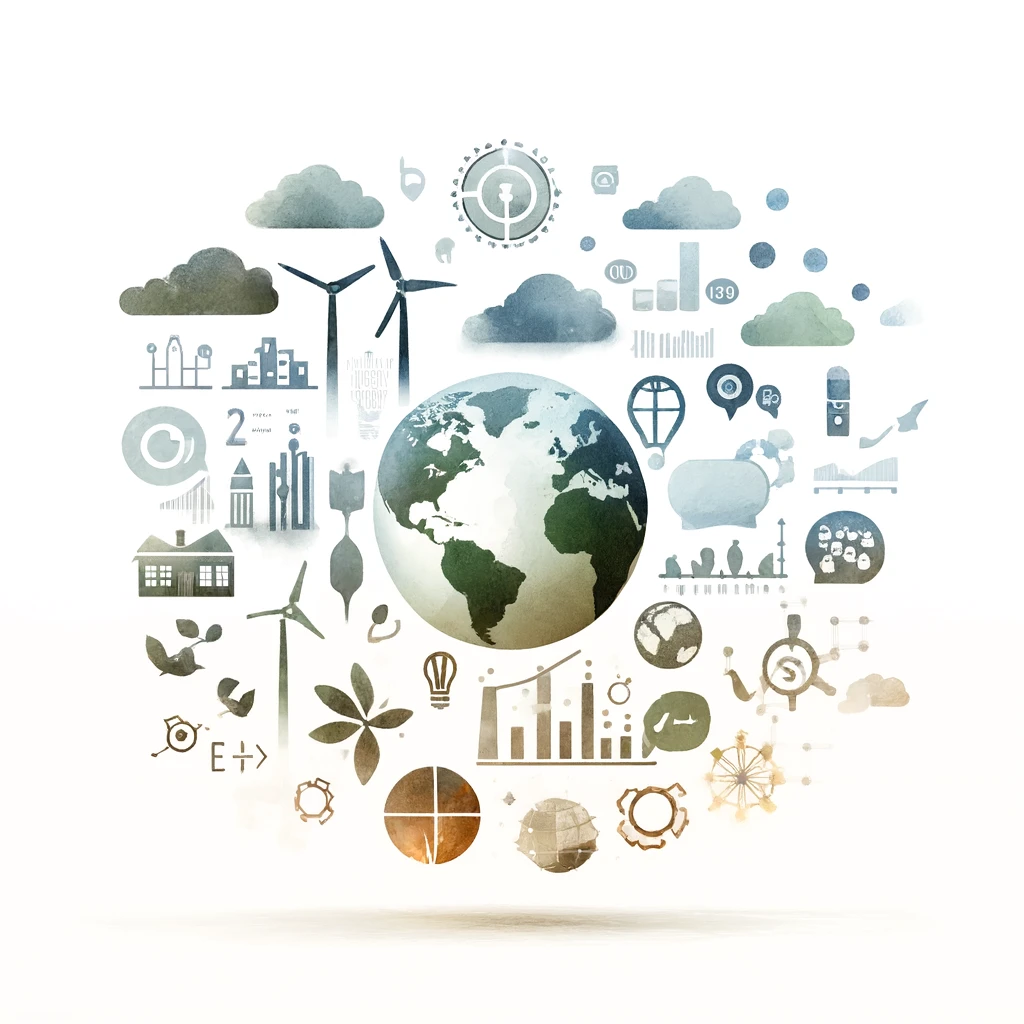
Causes
The increased concentration of GHGs in the atmosphere is mainly due to human activities emitting enormous amounts of GHGs. These are the major causes of global warming: burning of fossil fuels, deforestation, and industrial processes.
Evidence
- Temperature Records: The instrumental record over the past century unmistakably indicates an upward trend in world temperatures, while the few recent decades are considered the warmest on record.
- Ice Core Data: Cores extracted from Greenland and Antarctica ice contain historical evidence of Earth’s climate and greatly document the relationship between CO₂ levels and temperature over hundreds of thousands of years.
Impacts
- Polar Ice Caps: Most of the polar ice caps are breaking down, and the glaciers are melting. Due to this rise in sea levels, there is habitat loss for polar bears and penguins.
- Sea Levels: Overall sea levels rise as a result of the thermal expansion of seawater and melting of ice. This contributes to coastal flooding and erosion.
- Ecosystems: Eventually, ecosystems will be disrupted and biodiversity impaired by those animal species. Those who will face extinction due to shifting habitats and temperatures.
Climate Models and Predictions
Types of Climate Models
- Global Climate Models: These model the future state of the Earth’s climate system—atmosphere, oceans, land surface, and ice—to project future climate conditions.
- Regional Climate Models: Provide higher resolution information on climate for a specific region. Hence, these are useful in deducing the local effects of climate change and various adaptation strategies.
Scenarios for Future Climate (IPCC Reports)
The Intergovernmental Panel on Climate Change provides a set of scenarios from low to high-emission pathways. Thus, keeping in view different levels of GHG emissions. These scenarios are helping policymakers understand what the potential future climates might look like and the ensuing urgency of reduction.
Uncertainties and Challenges
While climate models are a necessary tool, they carry uncertainties because of the complexity of the climate system. These include feedback mechanisms, natural variability, and human responses. Precise predictions can hardly be made. There is a continuing need to further improve the precision and reliability of the models.
Mitigation and Adaptation Strategies
International Agreements
- Kyoto Protocol: The international agreement in which the industrialized countries committed themselves to reduce GHG emissions. Thereby, assuming that global warming exists and is caused by anthropogenic CO₂ emissions.
- Paris Agreement: The milestone agreement, reached under UNFCCC to help cut down global warming by capping the global temperature rise this century to well below 2 degrees Celsius above pre-industrial levels.
National and Local Initiatives
- Countries take different measures towards reducing emissions in several ways, like transitioning to renewable energy, increasing efficiency in energy use, and planting more trees.
- Some of the potential local projects include urban planning for minimizing carbon footprint, enhancing local public transportation systems, or community-based nature conservation projects.
Role of Technology and Innovation
- Renewable Energy: Solar, wind, and hydropower are some of the key technologies in use to reduce dependence on fossil fuels.
- CCS: Carbon Capture and Storage-techniques to capture and store CO₂ from industrial sources and power plants.
- Innovation: This involves the development of such aspects as sustainable agriculture, electric vehicles, and smart grids, which allow better management and distribution of energy.
Conclusion
Climate change is a multidimensional issue. Its response thus requires the cooperation of the whole world. It encompasses essential elements: the greenhouse effect, global warming, climate models, mitigation, and adaptation strategies, which form the basis for developing policies and practices. For aspirants of UPSC, the comprehensive understanding hereby sought is quite opportune given questions that are likely to be asked relating to environmental studies, sustainable development, and current affairs.
| Climate Change Impact UPSC Notes |
| 1. Climate change is driven by interactions between the atmosphere and other Earth systems, exacerbated by human activities like deforestation. 2. The greenhouse effect maintains the temperature of the Earth. Through human activities, this effect has been magnified, leading to global warming. 3. Key gases include carbon dioxide from fossil fuels, methane from agriculture, nitrous oxide from industry, and potent fluorinated gases from industrial uses. 4. Greenhouse gases originate from the burning of fossil fuels and deforestation, while mitigation takes place through the absorption of these gases by forests and oceans. 5. Increased global temperatures and ice core evidence showing rises in temperature with increases in CO2 levels are some of the obvious proofs of global warming. 6. The melting of the ice caps, rising sea levels, flooding of coasts, and disruption of ecosystems resulting in loss of biodiversity are the manifestations of the effects. 7. The Kyoto Protocol and the Paris Agreement present limits to increase the rise in temperature of the globe. 8. Growth in the field of renewable energy, electrical vehicles, and smart grids is an absolute necessity in the direction of reduced dependency on fossil fuels and enhanced energy management. |

